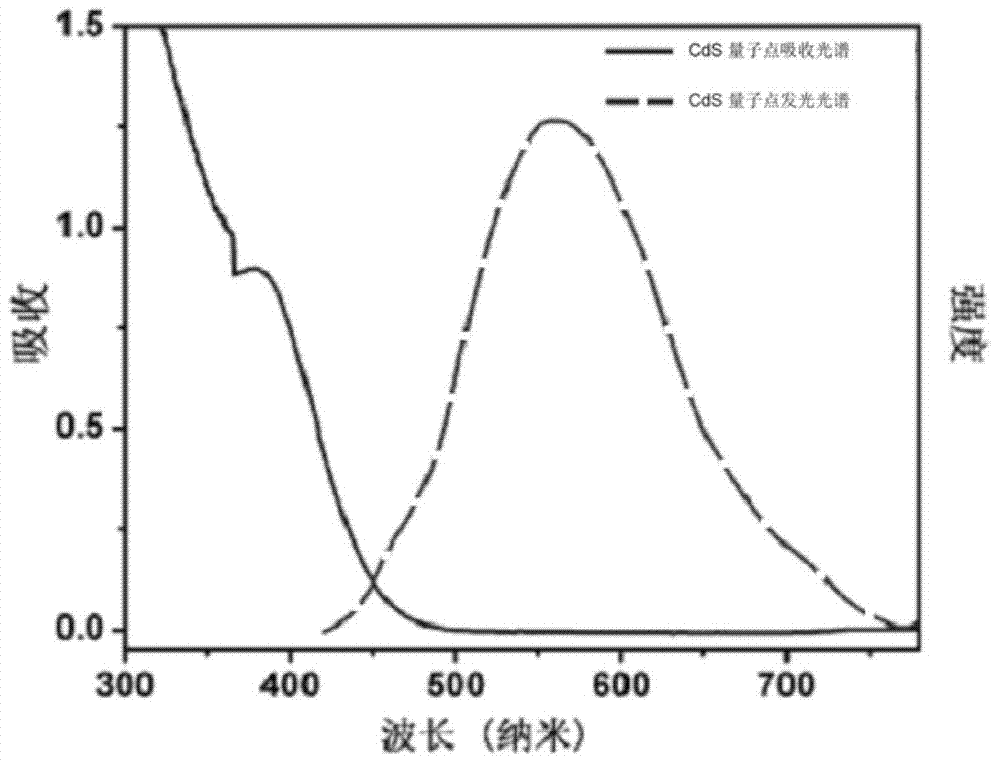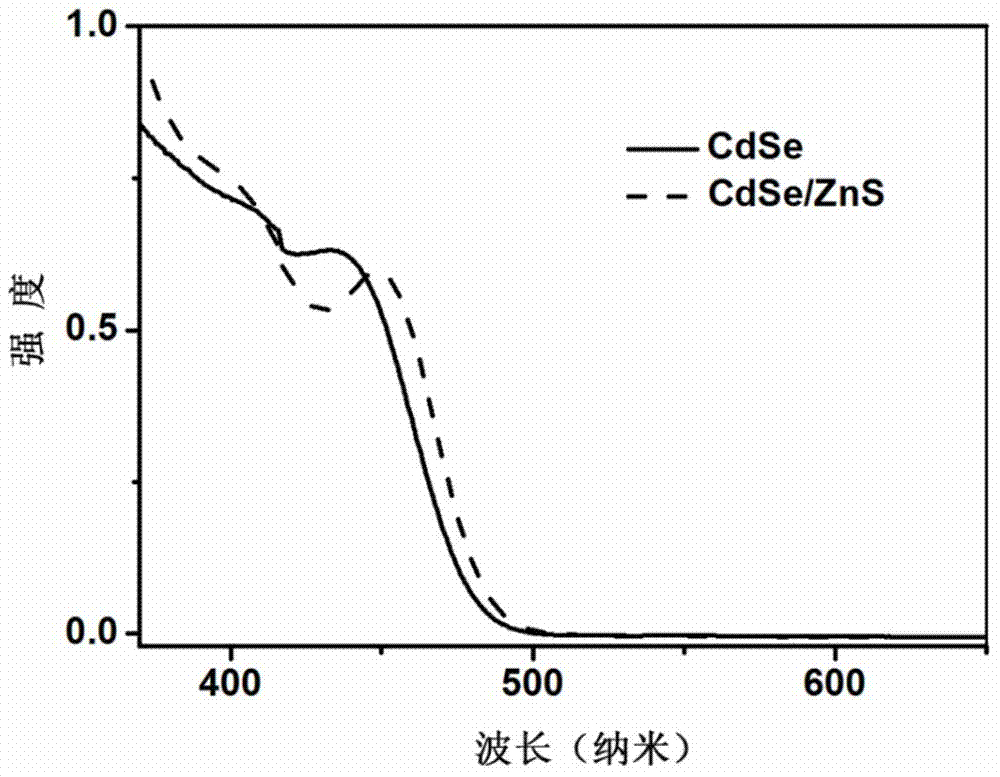Photoelectrode for producing hydrogen and oxygen by photoelectro-chemically decomposing water, preparation and application thereof
A photoelectrochemical and photoelectrode technology, applied in electrodes, electrolysis process, electrolysis components, etc., can solve the problems of high cost, complicated operation, poor stability, etc., and achieve the effect of high utilization efficiency, good repeatability and good stability
- Summary
- Abstract
- Description
- Claims
- Application Information
AI Technical Summary
Problems solved by technology
Method used
Image
Examples
preparation example Construction
[0064] Preparation of quantum dots:
[0065] Quantum dot references were prepared. The present invention is exemplified as follows: Taking the synthesis of CdS quantum dots as an example, the experimental steps include:
[0066] ① Accurately weigh 0.2284g CdCl 2 ·5 / 2H 2 O was dissolved in 190ml deionized water in a 500ml round bottom flask.
[0067] ②Add 1ml of mercaptopropionic acid, stir and degas for 30min.
[0068] ③ Add 10M sodium hydroxide solution dropwise under rapid stirring, and it can be observed that the solution changes from clear to blue-white turbid solution, and then becomes clear again. Then adjust the pH value to about 7 with 1M sodium hydroxide solution.
[0069] ④Add 10ml 0.1M Na 2 S solution (weigh 0.24018g Na 2 S·9H 2 O, dissolve vestigial with 10.0ml deionized water).
[0070] ⑤ Stir and react at room temperature for 3.5 hours.
[0071] References for the synthesis of other quantum dots (APL Materials 2014, 2(1), 012104; J.Phys.Chem.C 2008, 112...
Embodiment 1
[0075] A method for decomposing water to produce hydrogen and producing oxygen based on a photoelectrode for photoelectrochemical decomposition of water to produce hydrogen and produce oxygen, comprising the following steps:
[0076] Firstly, nickel oxide nanoparticles were loaded on the surface of tin-doped conductive glass by screen printing technology to prepare nickel oxide film; then, the prepared CdSe quantum dots were adsorbed on the surface of nickel oxide film by means of chemical adsorption, and the bifunctional molecules were Thioglycolic acid; Finally, the hydrogen-producing catalyst is prepared on the surface of the quantum dots by continuous ion layer adsorption deposition, and the hydrogen-producing catalyst is Ni(OH) 2 , thus making the photocathode.
[0077] Connect the prepared cathode to the photoelectrochemical cell, add Na 2 SO 4 Electrolyte (pH=7), platinum sheet as counter electrode, and Ag / AgCl electrode as reference electrode to build a photoelectroc...
Embodiment 2
[0079] A method for decomposing water to produce hydrogen and producing oxygen based on a photoelectrode for photoelectrochemical decomposition of water to produce hydrogen and produce oxygen, comprising the following steps:
[0080] The nickel oxide film was prepared by loading nickel oxide nanoparticles on the surface of tin-doped conductive glass by screen printing technology; then the prepared CdSe quantum dots were adsorbed on the surface of the nickel oxide film by means of chemical adsorption, and the linking molecule was mercaptopropane acid; in this way the photocathode is made.
[0081] Connect the prepared photocathode to the photoelectrochemical cell, add Na 2 SO 4 Electrolyte (pH=7), platinum sheet as counter electrode, Ag / AgCl electrode as reference electrode to build photoelectrochemical cell. Use xenon lamp as light source (p=100mW / cm 2 ) irradiates the photocathode (working electrode) and applies a certain bias voltage (-0.3V vs. reference electrode), and d...
PUM
| Property | Measurement | Unit |
|---|---|---|
| thickness | aaaaa | aaaaa |
| size | aaaaa | aaaaa |
| length | aaaaa | aaaaa |
Abstract
Description
Claims
Application Information
 Login to View More
Login to View More - R&D
- Intellectual Property
- Life Sciences
- Materials
- Tech Scout
- Unparalleled Data Quality
- Higher Quality Content
- 60% Fewer Hallucinations
Browse by: Latest US Patents, China's latest patents, Technical Efficacy Thesaurus, Application Domain, Technology Topic, Popular Technical Reports.
© 2025 PatSnap. All rights reserved.Legal|Privacy policy|Modern Slavery Act Transparency Statement|Sitemap|About US| Contact US: help@patsnap.com



